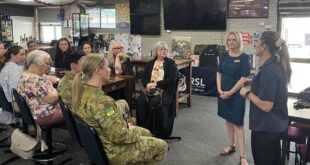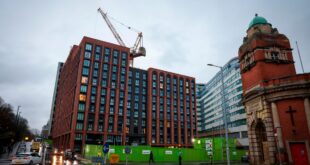Before the advent of motorised vehicles, the main form of road transport for those who could afford it was either by horseback or horse-drawn vehicle.
The turnpike system of roads which levied tolls on traffic began in Ireland in 1729. The turnpike road from Dublin to Belfast passed through Newry. The first coaches on the route began in the 1740s and took three days, stopping in Drogheda on the first night and Newry on the second. By the 1760s the ‘Newry Flying Coach’ could do the journey in a day in summer or a day and a half in winter. The longer travel time in winter was mainly attributed to the treacherous condition of the roads. An Act for repairing the road between Armagh and Newry in 1736 stated that the frequency and number of heavy carriages had caused the road to become so ruinous and bad that in winter many parts were impassable to vehicles.
Wealthy homes and businesses had their own stables for housing their horses and coaches, the arched entries to which can still be seen on the buildings on Trevor Hill, Newry. Stabling and Inns would have catered for travellers passing through the town, such as the stables in Bridge Street.
The 1820 Newry Directory illustrates the importance of horse-drawn transport to the economy of the town, listing many harness makers, saddlers, blacksmiths, farriers, coach-makers, cart-makers and wheelwrights.

Coaches to Belfast and Dublin ran daily and by the 1820s travel time had been reduced to fourteen hours. The Royal Mail Coach provided a Day-Mail and Night-Mail service to both destinations, departing from its office in Hill Street. Travelling northwards, the coach passed though Loughbrickland, Banbridge, Dromore, Hillsborough and Lisburn. Southwards the route passed through Dundalk, Castlebellingham and Drogheda. Other coaches such as the ‘Fair Trader’, ‘the Lark’, the ‘Shamrock’ and the ‘St. Patrick’ also ferried passengers along the same route. In the early 1800s milestones were located along the route, marking distances in Irish miles. The milestone on the junction of O’Hagan Street and Hill Street reads Dublin 50, Dundalk 10, Banbridge 10.

Coaches were also available from Newry to Downpatrick, Armagh and Dungannon. The Downpatrick coach departed three days a week, (returning the following day) stopping at Hilltown, Castlewellan and Clough. The ‘St. Patrick’ travelled to Armagh via Markethill three days a week. The Mail Coach also stopped in Markethill and Armagh on its way to Moy and Dungannon.

The arrival of the railways further reduced journey time between Belfast and Dublin to five hours, leading to the demise of the coach service. The railways however, could not venture everywhere and horse drawn transport still remained an important means of travel right up until the middle of the 20th Century.
The Museum is currently offering free tours of the exhibition galleries on Wednesdays and Thursdays at 2.00 pm. These must be booked in advance by calling our Education Officer at 0330 137 4422.
Newry and Mourne Museum is open Tuesday – Saturday 10.00 am – 4.30 pm. Please call 0330 137 4422 or email museums@nmandd.org for further information.
Visit the Museum website at www.visitmournemountains.co.uk



